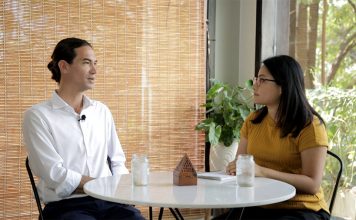At Cambodia’s first international motor show over the weekend, top-end car manufacturers including Mercedez-Benz, BMW and Ford presented their luxury range of SUVs, sedans, pickup trucks and motorbikes.
One of the biggest sales of the three-day event on Koh Pich was a $205,000 Land Rover Supercharge—which has seats that gently massage the passenger’s back—bought by a Cambodian couple in their mid-30s.
Vehicle imports to Cambodia, which include cars, trucks and motorcycles, more than doubled to 1.9 million units last year and roads in urban areas have become extremely congested as car sales in the country have grown.
But car manufacturers said that many of the cars on the road are secondhand and imported by independent car dealers, a trend that is hampering the domestic market for new automobile sales.
“We are seeing a second generation of wealth coming in. With the availability of social media and the popularity of the iPhone, young people can see what [cars] are about and they want them,” said D.J. Simpson, district manager for Ford’s Southeast Asia export and growth operations.
However, Mr. Simpson also said that attracting a market of buyers rich enough to purchase brand- new automobiles was still a way off.
“One-third of the population earns less than $40 per month. Once a country’s population per capita is $5,000 that’s when the industry takes off,” he said.
Sopheap Inn, deputy division manager for Ford, said only 10 percent of imported cars are actually brand new, with the rest made up of secondhand and gray imports.
Pily Wong, cofounder of the Cambodia Automotive Industry Federation (CAIF) and CEO of Hung Hiep (Cambodia) Co. Ltd., a Mercedes-Benz dealership, said the first thing Cambodians ask him when interested in buying a car is what gadgets it comes with, then about safety.
But with Hung Hiep’s Cambodian sales at a maximum of 60 units per year, business is still slow for authorized dealerships here, despite cars such as the Mercedes S class selling for $150,000.
The aim of the exhibition, Mr. Wong said, was to show the government that CAIF is an organized body, with a strong mind to develop Cambodia’s new car market.
“Secondhand cars unfit to be on the road in other countries come to Cambodia often sliced into three pieces under the label of scrap metal. The cars are then put together in roadside repair shops. This saves importers money on tax,” Mr. Wong said. “The wiring of the cars frequently malfunction putting the driver at serious risk of losing control of the car and crashing.”
He added that there were still no regulations in Cambodia to stop cars with poor safety standards from appearing on the roads and that tighter rules would help the car industry to grow quicker.
“The industry growth in Myanmar and Vietnam has put a lot of pressure on the Cambodian automotive business and we hope the show will create enough buzz to fight for more regulation and make us winners,” he said.
Despite the challenges, a quick look at the CPP congress being held next door to the motor show over the weekend showed how Cambodia’s wealthy are beginning to spend more and more money on brand new cars with a high price tag.
Sok Sara, a salesman for Envotech, who clinched the deal on the Land Rover Supercharge, said cars like this are fast becoming status symbols for wealthy individuals. But for most people here, purchasing a brand new automobile is simply far too expensive.
Roeun Sokha, a 24-year-old university student majoring in economics, said for people from poor families like himself, the motorcycle was the only option. He also said that driving big cars on Phnom Penh’s narrow and often congested streets was not practical.
“Streets are small so you can’t drive a car and there are always traffic jams,” he said.
Ly Bunhay, general manager of Toyota Cambodia, which was noticeably absent from the show, said the major challenge for the company would be to attract young, affluent Cambodians.
“We are the market leaders when it comes to pickup trucks and SUV[s]. But we need to try and convert young people who own used cars bought on the gray market to buy new ones.
“We need a type of source of supply that can bring affordability to the customer and bridge the gap.”
Reproduced by kind permission of the Cambodia Daily







